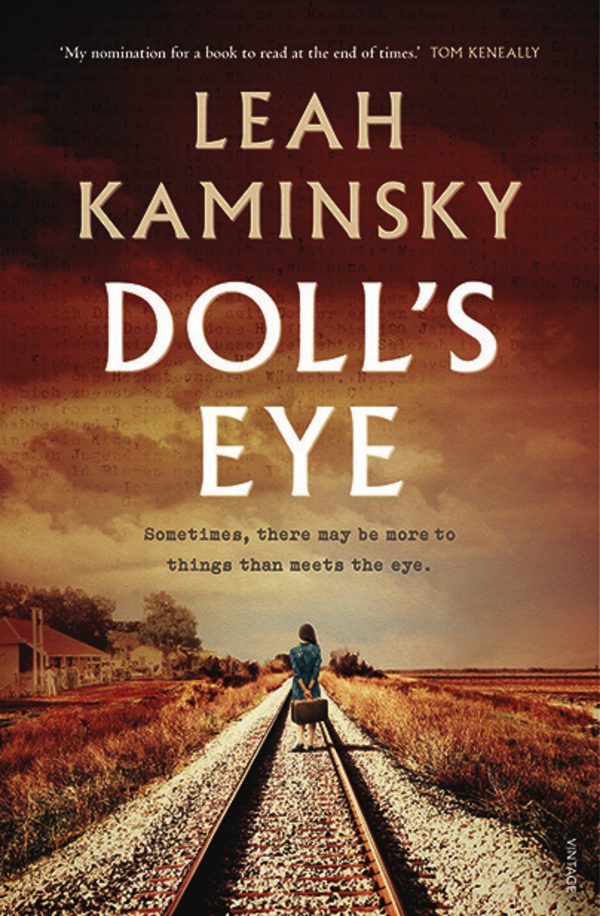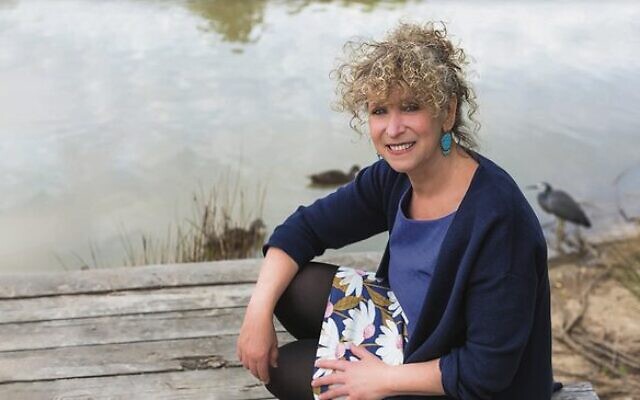What’s behind the doll’s eyes?
What happens when a young woman escaping Germany crosses paths with a Yiddish poet fleeing persecution? A love story. But Doll's Eye is so much more than that; it's a commentary on what's really behind what we see in front of our very own eyes. The AJN spoke to author Leah Kaminsky about her latest novel.
According to author Leah Kaminsky, her latest novel Doll’s Eye is a love story.
It’s a love story about a man and a woman, but it’s also about a love of language, in particular Yiddish, and culture.
“I’m writing very much about the refugee experience and the loss of language,” Kaminsky told The AJN. “There’s a lot of Yiddish peppered throughout the book. It’s about the cannibalisation of smaller languages by an increasingly homogenised world, and how with the loss of those languages, is the death of culture and identity as well.”
While Kaminsky says she writes “in terms of the specifics”, she is very much talking about the universal as well. For example, Doll’s Eye is set in the late 1930s in outback Australia, with the backdrop of World War II and escapism behind it. But, it’s also a comment on what was happening in Australia at the time with the Indigenous population and the loss of their languages with the arrival of the Europeans.
Doll’s Eye follows two main characters – Anna Winter – a young woman unwittingly caught up in a sophisticated web of Nazi spies, who flees Germany to Australia with her doll collection – and Alter Mayseh – a Yiddish poet fleeing persecution.
The book is set in Birdum – the last stop on the North Australian Railway – which Kaminsky describes as an absolute ghost town now. While it used to be a hive of activity with military bases and an evacuation hospital nearby, after World War II, the North Australian Railway terminated nine kilometres up the road at Larrimah. Birdum lost not only its position as the terminus of the railway, and all the hub and bub that came with it, but also its pub which was moved to Larrimah too.
Kaminsky said there were two instances that inspired the book. First, when she was 15, she met painter Yosl Bergner, who showed her a photo of his father, a Yiddish poet, who had journeyed to the centre of Australia.
Many years later, she found herself in the South of France, visiting a friend who had moved there.
“She took me to a doll museum, and there was a woman who must have been in her nineties, sitting outside with her little lunch box collecting tickets,” Kaminsky recalled. “It had been her childhood home, which she’d had to move out of because of her doll collection.”
Upon entering, Kaminsky, her daughter and her friend found themselves face to face with hundreds of dolls.
“I could almost imagine the whispering of these dolls who were now ownerless, who had been abandoned. The children were long gone. But they had been loved and cherished and played with. And I thought, what are their stories, where do they come from?”
Kaminsky chats about the importance so many of us put on our own dolls from a young age. And what happened to the dolls that belonged to the children who died in the war?
“It was like a lightning bolt,” Kaminsky said. “That was the inspiration.”
Kaminsky is a physician as well as an award-winning writer.
Despite describing herself as a humanities student, she always wanted to get into medicine. She says it is a really lovely balance and that the occupations complement each other.
“It’s always all about the story,” she said. “When you’re a doctor, you need to listen to the subtext, you have to listen to what the patient is not saying, read between the lines. So they very much feed each other.”
Kaminsky’s medical background has come into play with this book more than a few times. The term “doll’s eye” is used in medicine to refer to a reflex that can help determine whether someone is conscious or not. It was a concept that spoke directly to the themes of her book.
“I clicked with the metaphor of that,” she said. “Are we really seeing what we’re looking at? What are the undercurrents, what’s behind the veneer? In the lead up to Nazi Germany, what was going on there behind the scenes?”

Kaminsky explained that Anna, the main protagonist in the book, has one blue eye and one brown eye, which plays with the idea of “Aryan” perfection, which was central to Nazi ideology.
“Thematically, eyes come into everything,” Kaminsky said. “It’s threaded through the whole book and again, that comes back to really seeing things. What’s behind, especially today, the glitz and shine? What’s the essence of things?”
When asked what advice she would give to aspiring writers, she said you really have to want to do it.
“It’s my absolute passion and obsession. What’s really important for my soul is to separate the business of writing from the actual process of writing. You can drive yourself nuts if your goal is to just publish a book. What do people do when they don’t write?” she laughed.
Doll’s Eye is published by Vintage Australia, $32.99 rrp


comments